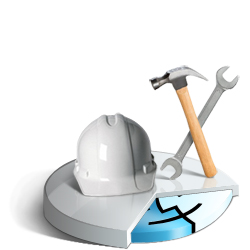 Something that many Android phones and tablets are able to do is connect to a computer as if they were an external disk drive. It’s remarkably easy to set up, and all that is required is connecting the Android to a Mac through USB, and it’ll then mount accessible through the desktop and Finder, from which you can treat it like any other storage device to copy files to and from, making it an excellent a replacement to a USB thumb drive. No downloads are required on either the Android or the Mac to accomplish this.
Something that many Android phones and tablets are able to do is connect to a computer as if they were an external disk drive. It’s remarkably easy to set up, and all that is required is connecting the Android to a Mac through USB, and it’ll then mount accessible through the desktop and Finder, from which you can treat it like any other storage device to copy files to and from, making it an excellent a replacement to a USB thumb drive. No downloads are required on either the Android or the Mac to accomplish this.Depending on the individual device settings, you may need to do this every time you connect or only once:
- Attach the Android device to the computer through USB – the device may ask to “Choose a connection type”, and if so choose “Disk Drive”, otherwise continue
- Open Settings, then choose “Connect to PC”
- Select “Default connection type” and choose “Disk drive”, then choose “Done”
A small USB logo will appear in the status bar indicating the device will mount as a disk drive, and at this point the Android should now show up as a connected storage device, just like any other external hard drive or USB thumb drive.
In Mac OS X, you’ll find it on your desktop or in any Finder window sidebar, and in Windows it’ll be in My Computer alongside other mounted devices. Sometimes you’ll actually have two drives show up with a mounted Android device, one for the internal Flash storage (which you should generally not modify as it contains system components), and one for the expansion memory of an SD card. The name of the mounted drive is usually associated with the manufacturer, unless it has been changed to be otherwise.
From here you can copy files to and from the Android and the computer, move video or photos directly through the file system rather than treating the Android like a camera and transferring images that way, whatever you want to do. To keep things tidy and to prevent any files from accidentally being overwritten, it’s best to create a new folder specifically for the files you wish to store on the Android and to avoid modifying the other directories seen on the device.
For people who are accustomed to direct file system access, this is a wonderful feature that is dearly missing from the iPhone, iPod, and iPad, though it’s unlikely to ever arrive to iOS natively.
Note: If this Tutorial and News worked for you (and it should work), please leave a comment below. Thanks.



0 comments:
Post a Comment